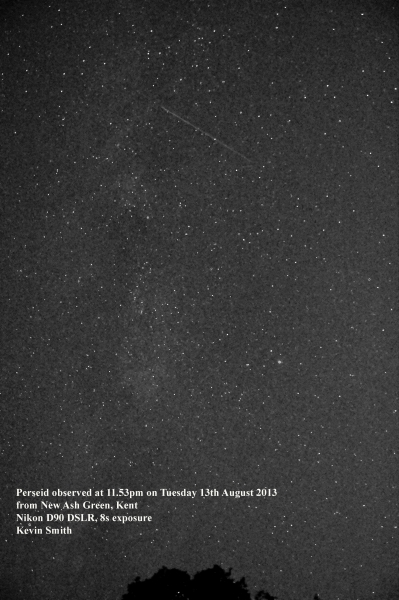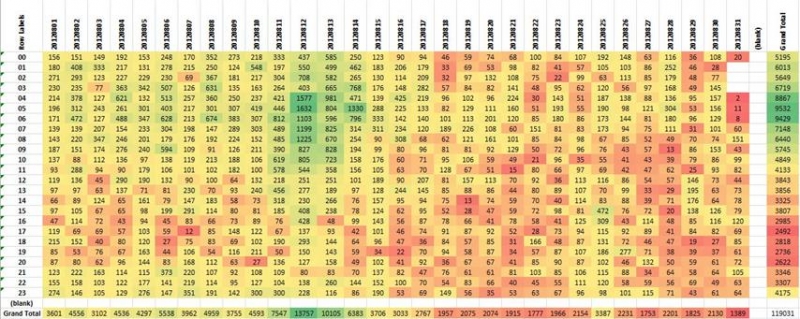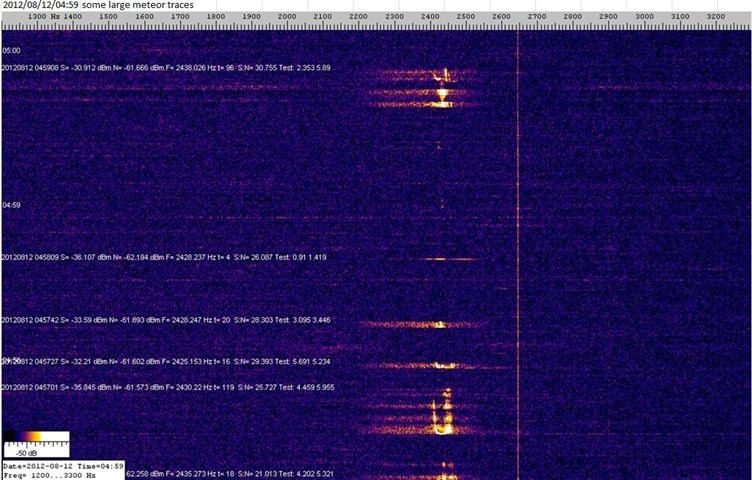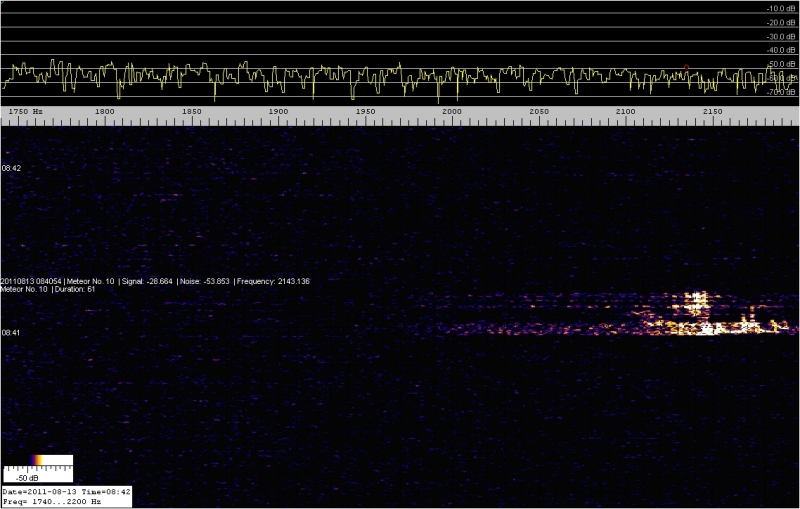[et_pb_section bb_built="1"][et_pb_row][et_pb_column type="2_3"][et_pb_text _builder_version="3.9"]

[/et_pb_text][/et_pb_column][et_pb_column type="1_3"][et_pb_text _builder_version="3.9"]
What is astonishing about this image is that in 8 seconds Kevin has also captured the Milkyway which in his neck of the woods is washed out with light pollution.
[/et_pb_text][/et_pb_column][/et_pb_row][et_pb_row][et_pb_column type="1_3"][et_pb_text _builder_version="3.9"]
[/et_pb_text][/et_pb_column][et_pb_column type="2_3"][et_pb_text _builder_version="3.9"]
Simon Dawes left his automated radio meteor observations to do the work and checked up later in August
Like last year the morning of the 12th showed the most meteors.
[/et_pb_text][/et_pb_column][/et_pb_row][et_pb_row][et_pb_column type="1_3"][et_pb_text _builder_version="3.9"]
This was the highest duration meteor captured on the 12th August 2013 at 11:38:18 it lasted for 338 counts which looking at the trace is about a minute.
[/et_pb_text][/et_pb_column][et_pb_column type="2_3"][et_pb_text _builder_version="3.9"]
[/et_pb_text][/et_pb_column][/et_pb_row][/et_pb_section]



